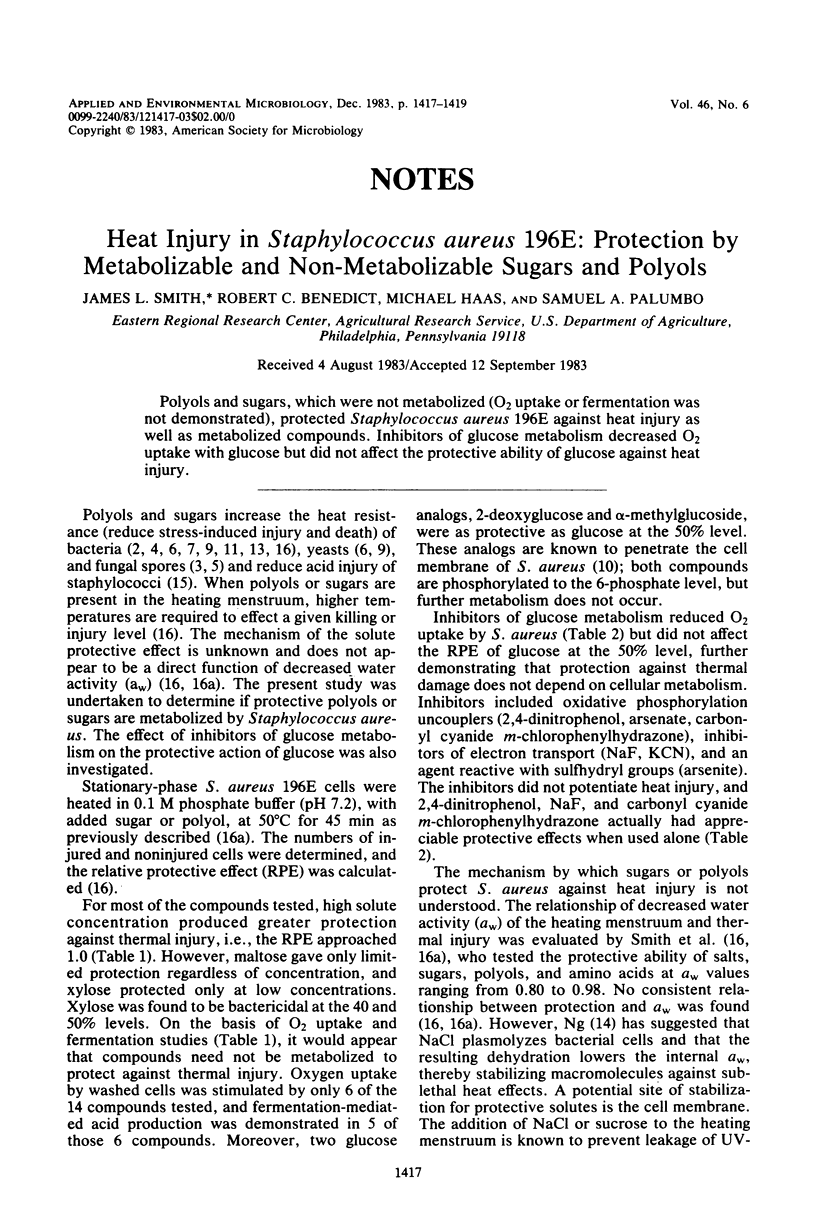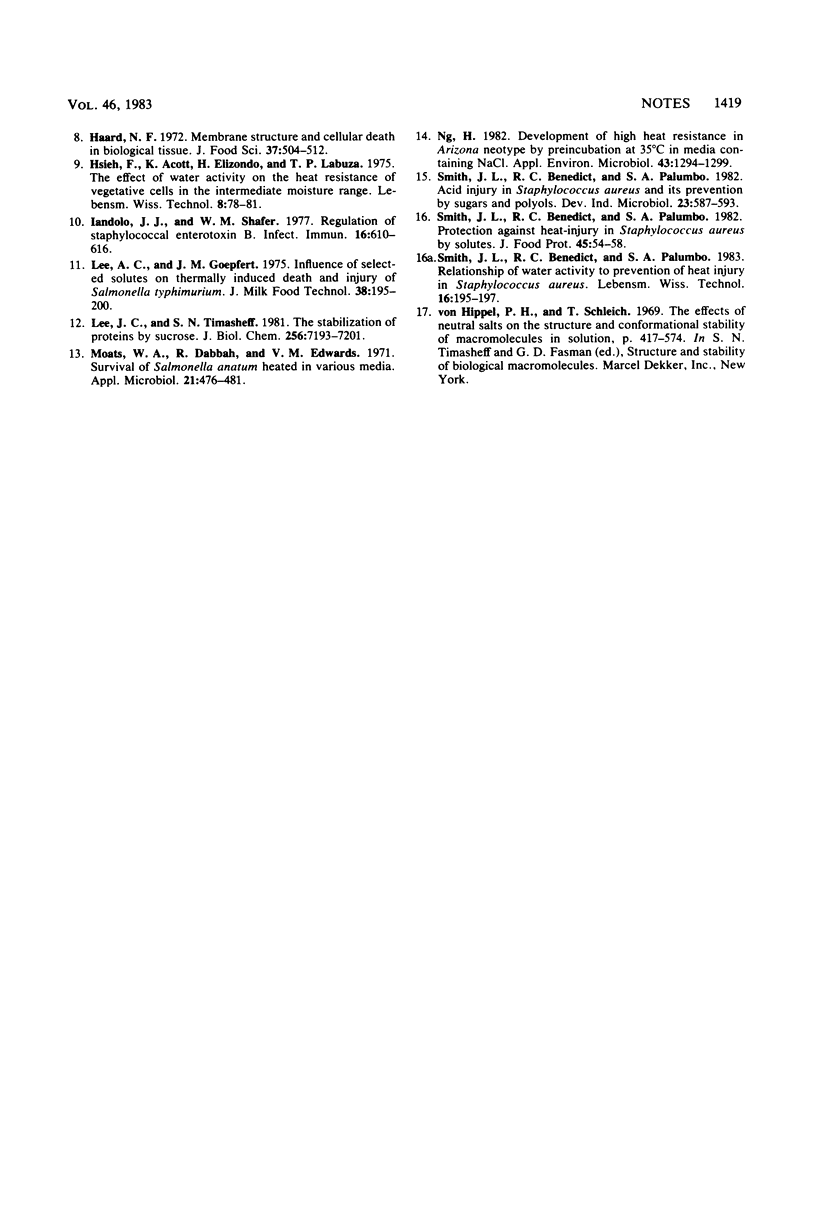Abstract
Polyols and sugars, which were not metabolized (O2 uptake or fermentation was not demonstrated), protected Staphylococcus aureus 196E against heat injury as well as metabolized compounds. Inhibitors of glucose metabolism decreased O2 uptake with glucose but did not affect the protective ability of glucose against heat injury.
Full text
PDF


Selected References
These references are in PubMed. This may not be the complete list of references from this article.
- Arakawa T., Timasheff S. N. Stabilization of protein structure by sugars. Biochemistry. 1982 Dec 7;21(25):6536–6544. doi: 10.1021/bi00268a033. [DOI] [PubMed] [Google Scholar]
- Baird-Parker A. C., Boothroyd M., Jones E. The effect of water activity on the heat resistance of heat sensitive and heat resistant strains of salmonellae. J Appl Bacteriol. 1970 Sep;33(3):515–522. doi: 10.1111/j.1365-2672.1970.tb02228.x. [DOI] [PubMed] [Google Scholar]
- Beuchat L. R. Combined effects of solutes and food preservatives on rates of inactivation of and colony formation by heated spores and vegetative cells of molds. Appl Environ Microbiol. 1981 Feb;41(2):472–477. doi: 10.1128/aem.41.2.472-477.1981. [DOI] [PMC free article] [PubMed] [Google Scholar]
- Calhoun C. L., Frazier W. C. Effect of available water on thermal resistance of three nonsporeforming species of bacteria. Appl Microbiol. 1966 May;14(3):416–420. doi: 10.1128/am.14.3.416-420.1966. [DOI] [PMC free article] [PubMed] [Google Scholar]
- Gibson B. The effect of high sugar concentrations on the heat resistance of vegetative micro-organisms. J Appl Bacteriol. 1973 Sep;36(3):365–376. doi: 10.1111/j.1365-2672.1973.tb04118.x. [DOI] [PubMed] [Google Scholar]
- Goepfert J. M., Iskander I. K., Amundson C. H. Relation of the heat resistance of salmonellae to the water activity of the environment. Appl Microbiol. 1970 Mar;19(3):429–433. doi: 10.1128/am.19.3.429-433.1970. [DOI] [PMC free article] [PubMed] [Google Scholar]
- Iandolo J. J., Shafer W. M. Regulation of staphylococcal enterotoxin B. Infect Immun. 1977 May;16(2):610–616. doi: 10.1128/iai.16.2.610-616.1977. [DOI] [PMC free article] [PubMed] [Google Scholar]
- Lee J. C., Timasheff S. N. The stabilization of proteins by sucrose. J Biol Chem. 1981 Jul 25;256(14):7193–7201. [PubMed] [Google Scholar]
- Moats W. A., Dabbah R., Edwards V. M. Survival of Salmonella anatum heated in various media. Appl Microbiol. 1971 Mar;21(3):476–481. doi: 10.1128/am.21.3.476-481.1971. [DOI] [PMC free article] [PubMed] [Google Scholar]
- Ng H. Development of high heat resistance of Arizona neotype by preincubation at 35 degrees C in media containing NaCl. Appl Environ Microbiol. 1982 Jun;43(6):1294–1299. doi: 10.1128/aem.43.6.1294-1299.1982. [DOI] [PMC free article] [PubMed] [Google Scholar]


